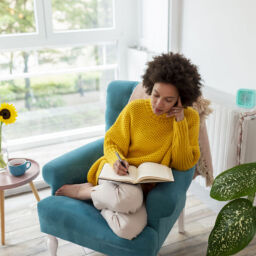
Keeping Up Appearances
It’s pretty addictive to take filtered selfies, especially when there are now so many to choose from. There are now countless filters across Instagram, Snapchat and TikTok that can instantly erase blemishes, widen eyes, lengthen lashes, puff up lips, thin out noses, lift cheekbones and illuminate skin. Some filters are obviously just for fun and entertainment, others are so subtle that they’re clearly intended for stealth physical augmentation. Apps like FaceTune, BeautyPlus, YouCam and Perfect365 have hundreds of thousands of downloads each, evidence of our widespread obsession with these weapons of mass perfection. Today, anyone with a cell phone can manipulate their own images like a pro in a matter of seconds.
Guilty Pleasures
I have not been immune to the addictive nature of touching up selfies with beauty filters and corrective apps. After posting a convincingly real yet filtered image on Instagram, SnapChat or Facebook and receiving reams of accolades (Wow! You never age! You look amazing! Gorgeous!), the dopamine rush is enough to incite repeat behavior for more rewards. It wasn’t long before I couldn’t imagine posting a selfie without touching it up in some way, even to heal a zit or adjust the brightness, in order to enhance my own pixel-perceived attractiveness.
Beauty Advertising: The Ugly Truth
In the beauty industry, there has been a decades-long backlash against unrealistic body images and outrageously photoshopped models, particularly when it comes to fashion and beauty product advertising. Dove can be credited as the first major personal care brand to take a bold stance against PhotoShop overuse when it launched its Campaign for Real Beauty in 2004. I remember the controversy well. Half the industry felt scandalized, Shit! We’ve been exposed! While the other half felt smug, Good luck, Dove! You won’t sell soap with that campaign. The self-acceptance trend skyrocketed in 2007 by young, likeable, self-taught makeup artist-turned-YouTuber, Michelle Phan, whose jaw-dropping before-and-after cosmetic tutorials influenced a generation of girls and boys to courageously reveal their flawed ‘before’ faces and bond over the artistic process of DIY transformation. The UK has been a frontrunner in taking beauty brands to task over egregiously retouched models. Back in 2011, makeup ads in the UK for products by L’Oreal were banned after the UK’s Advertising Standards Authority (ASA) deemed the airbrushing used in post-production to be misleading to consumers. The same year, the American Medical Association (AMA) adopted a policy encouraging advertising associations to help develop guidelines that would discourage the use of unattainable beauty images, especially in teen-oriented publications. The AMA stated, “A large body of literature links exposure to media-propagated images of unrealistic body images to eating disorders and other child and adolescent health problems.” Research studies conducted in later years only seem to reinforce the AMA’s point. A 2014 national survey by Pitt’s Center for Research on Media, Technology and Health found that use of multiple social media platforms is more strongly associated with depression and anxiety among young adults than the total amount of time they spend on social media. A 2015 research study published to the International Journal of Eating Disorders concluded self photo editing was associated with body dissatisfaction in adolescent girls. And in 2018, panel members promoting the CVS Beauty Mark campaign cited the following eye-opening statistics:
- 80 percent of women feel worse after looking at beauty ads.
- 30 percent of high school girls have some type of eating disorder.
- 42 percent of first- to third-graders want to be thinner.
- 90 percent of girls ages 15-17 want to change one major thing about themselves.
The Double Standard
While advertisers have come a long way (baby!) to reflect pop culture’s trend toward real beauty and body positivity, it seems almost surprising that a counter-trend is occurring in the escalation of beauty filter availability and their widespread use. Why is that? Why are we holding advertisers accountable for keeping it real when we ourselves are not willing to do so?
Art vs. Deception
When it comes to selfie filters and photo adjustments, some argue that visual taste and preferences play the major role; that augmentations are made to enrich and enhance aesthetic interest overall. But where is the line between art and deception? Expression and dishonesty? Empowerment and manipulation? It’s a loaded question with a myriad of case-by-case subjective answers.
Digging into Intention
There are a whole host of reasons why we opt to use selfie filters. Perhaps we’re just having fun or doing it for aesthetic joy, like a painter or a makeup artist. Perhaps we want to project the most polished version of ourselves to others, like dressing up for church. Perhaps we want to fit in and so we’re influenced by what others are doing, like imitating the cool kids. Perhaps we’re insecure with our looks and want to augment our appearances altogether, like a virtual reality avatar. In some cases, we start out using filters for fun, and then find ourselves sliding into habitual usage. In extreme cases, we become very dissatisfied with the gap between our real appearance and our filtered appearance, a phenomenon now called Snapchat dysmorphia. And in growing cases, we take action and seek cosmetic surgery to look more like our filtered appearances. Understanding the root reason for any behavior is an important step in understanding if the behavior is borne out of well-being or unwellness. Oftentimes, only we ourselves know for sure.
Cold Turkey Challenge
In the past, I’ve successfully quit undesirable behaviors by declaring my intent out loud and then quitting cold turkey. For example, for my new year’s resolutions this year, I quit smoking cigarettes cold turkey (bad for my health!) and also boycotted fast fashion (bad for the environment!). But I still kept using selfie filters, probably because I didn’t see the danger in it. Now, after doing the research as well as some soul-searching, my eyes are figuratively opened. So today, I am declaring a 30-day filter fast to prove to myself that I can comfortably survive in online no-filter mode for a whole month. Tagged as the #hbmnofilterchallenge, I encourage everyone to join in. Even as I made my first post announcing this challenge, I felt a tremendous wave of insecurity showing the world my unretouched naked face. I hid the picture behind about 9 others that were filtered. Truthfully, I never felt comfortable with my looks, and I battled my entire life with feelings of low self-esteem. Beginning with the end in mind, I am hopeful that the outcome of this experiment will be decreased nervousness, increased confidence, and elevated humor looking back at it all.

















